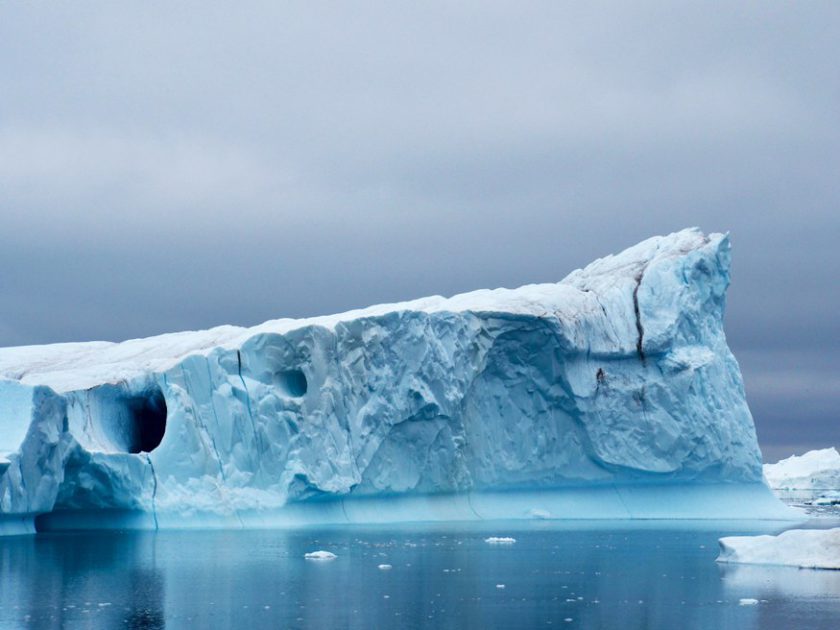The following information concerns a newly published study titled “Critical slowing down suggests that the western Greenland Ice Sheet is close to a tipping point” It was published in PNAS on May 25, 2021. (Well yes, today is the 19th May, I guess they are referring to the print date, it is there now online). The significance of this paper is as follows.
It has been suggested that, in response to anthropogenic global warming, the Greenland Ice Sheet may reach a tipping point beyond which its current configuration would become unstable. A crucial nonlinear mechanism for the existence of this tipping point is the positive melt-elevation feedback: Melting reduces ice sheet height, exposing the ice sheet surface to warmer temperatures, which further accelerates melting. They reveal early-warning signals for a forthcoming critical transition from ice-core-derived height reconstructions and infer that the western Greenland Ice Sheet has been losing stability in response to rising temperatures. They also show that the melt-elevation feedback is likely to be responsible for the observed destabilization. Their results suggest substantially enhanced melting in the near future.
The details below come via Potsdam Institute for Climate Impact Research, Germany …
Parts of Greenland may be on the verge of tipping: new early-warning signals detected
Scientists have detected new early-warning signals indicating that the central-western part of the Greenland Ice Sheet may undergo a critical transition relatively soon. Because of rising temperatures, a new study by researchers from Germany and Norway shows, the destabilization of the ice sheet has begun and the process of melting may escalate already at limited warming levels. A tipping of the ice sheet would substantially increase long-term global sea level rise.
“We have found evidence that the central-western part of the Greenland ice sheet has been destabilizing and is now close to a critical transition,” explains lead author Niklas Boers from the Potsdam Institute for Climate Impact Research (PIK) and the Free University, Berlin, Germany. “Our results suggest there will be substantially enhanced melting in the future – which is quite worrying.”
A key mechanism determining the overall stability of the Greenland ice sheet is the melt-elevation feedback. Essentially, increasing temperatures causes melting, which reduces the ice sheet’s height. On a mountain, it’s cold on top and less cold at the bottom. Hence, as the ice sheet’s surface is melting, it sinks into lower, warmer surrounding air – which in turn leads to accelerated melting and additional height loss – a vicious circle. “This mechanism is long known, and it is one of the prime suspects for the detected destabilization of the central-western parts of the Greenland ice sheet. But we cannot exclude that other feedbacks, for example related to the albedo of the ice sheet, play an important role too,” Boers explains.
Unsettling warning signs
For their analysis Boers and his co-author Martin Rypdal from the Arctic University of Norway factored in sea-level temperatures from weather stations, melt intensities from ice cores in central-west Greenland, as well as corresponding computer model simulations – and found unsettling early warning signs in the fluctuations of ice sheet heights, suggesting that a tipping of this part of the ice sheet is approaching. “The warning signs are caused by characteristic changes in the dynamics of the Greenland ice sheet, which reflect how well the ice sheet can resist against and recover from disruptions”, Rypdal explains.
According to previous model results the melting of Greenland Ice Sheet is inevitable beyond a critical global mean temperature brink ranging from 0.8 to 3.2 degrees Celsius above pre-industrial levels. Once this threshold is crossed, the whole ice sheet could melt entirely over hundreds or thousands of years, potentially leading to a global sea-level rise of more than 7 meters and a collapse of the Atlantic Meridional Overturning Circulation (AMOC), which is responsible for the relative warmth in Europe and North America. But in addition to several positive feedbacks that accelerate melting, there exist negative feedbacks that might stabilize the Greenland ice sheet at intermediate heights levels, mostly via increasing accumulation. “We urgently need to better understand the interplay of the different positive and negative feedback mechanisms that determine the current stability and the future evolution of the ice sheet”, says Boers.
The future of the ice sheet is uncertain
The study suggests that at least in the central-western part of the Greenland ice sheet a critical temperature threshold is close. Yet how this affects the ice sheet as a whole remains unclear:
“Given the signs we detect in ice cores from the central-western part, we have to increase our efforts to gather more observation and to increase our understanding of the mechanisms at play, for more reliable estimates of the future evolution of the Greenland ice sheet,” says Rypdal. “The main problem is the so-called hysteresis,” Boers continues. “Regardless of the precise interplay of the different feedbacks, we would have to considerably reduce temperatures below pre-industrial to get back to the ice sheet height levels of the last centuries. So practically, the current and near-future mass loss will be largely irreversible. That’s why it is high time we rapidly and substantially reduce greenhouse gas emissions from burning fossil fuels and re-stabilize the ice sheet and our climate.”
It is yet one more data point that warns us that doing nothing truly meaningful about our greenhouse gas emissions will have consequences.
